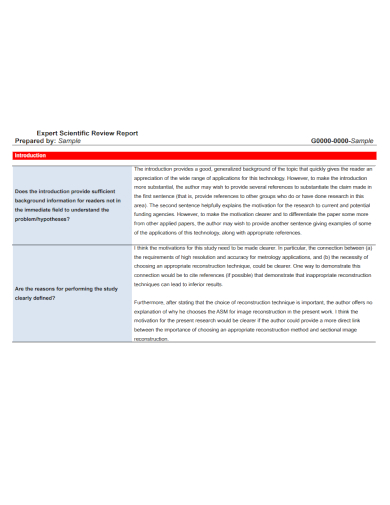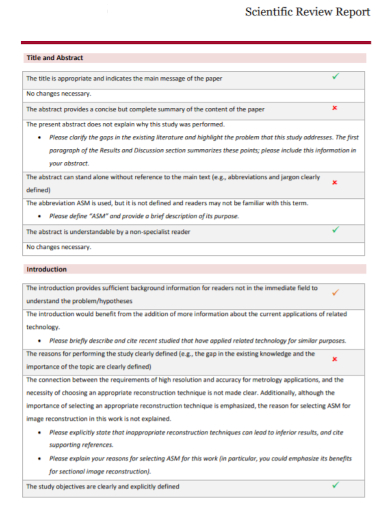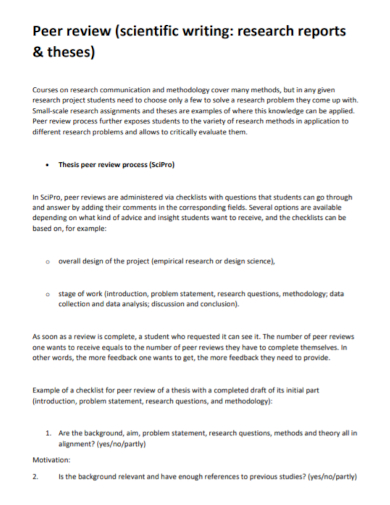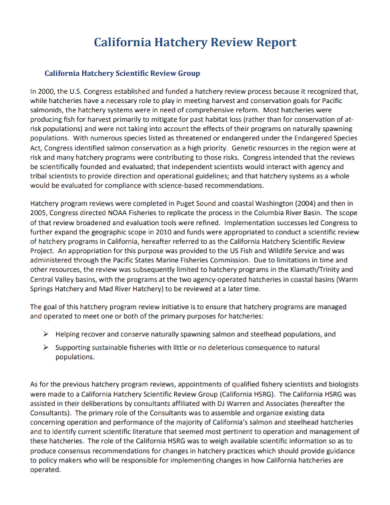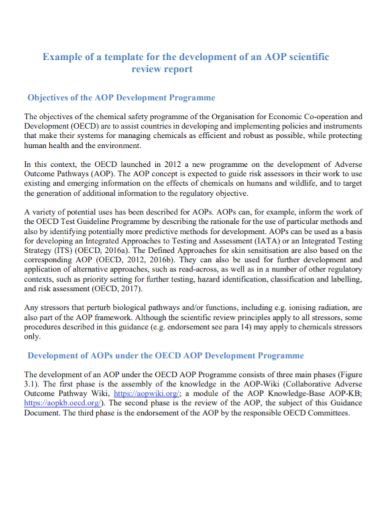“The scientific man does not aim at an immediate result. He does not expect that his advanced ideas will be readily taken up. His work is like that of the planter – for the future. His duty is to lay the foundation for those who are to come, and point the way.” These words from Nikola Tesla make sense in a way today’s scientists should be competent and reliable in their scientific research studies as their works will significantly help the succeeding generations of new scientists in their scientific discovery for the future.
If you are a person who aspires to be a scientist, one of the things you need to consider is being able to create an effective scientific review report. In this article, we will discuss beneficial steps in writing your literature review for a scientific research paper, plus several downloadable templates for you to use. Keep on reading!
5+ Scientific Review Report Samples
1. Expert Scientific Review Report
2. Scientific Review Report
3. Peer Scientific Review Report
4. Scientific Review Group Report
5. Scientific Development Review Report
6. Scientific Research Review Report
What is a Scientific Review Report?
A scientific review report is a useful piece of professional research paper that contains a well-detailed analytical summary of the process, development, and/or results of a specific scientific research, a brief examination concerning the condition of a scientific research problem, or a crucial account about a scientific journal that has been published by certified researchers. It comprises several analyses, suggestions, opinions, and conclusions of the scientific research project.
How to Create a Scientific Review Report
Creating a clear and well-detailed literature review for scientific reports is helpful in a wide array of research studies. It is integral that you use explicit words and definite sentences while interpreting your analysis of a particular lab study.
In this matter, we suggest that you follow the steps below while freely using one of our scientific review report templates in this article:
1. Write the abstract of your scientific review
One of the core aspects that you need to consider in creating a scientific review report is writing the abstract of your scientific review. So, include a summary of your main thesis and the scientific studies you analyze in your review.
2. Develop your introduction
In order to design an effective report for your scientific review work, it is important that you develop an effective introduction which outlines what you are going to discuss throughout the scientific review. Then, explain to your reader the reason why it is fundamental that you reviewed the literature based on your subject area.
3. Create the content
The next step you must do to have a successful scientific review report is to create the overall content or body. Preparing the body of your report can take different types of forms and structures based on your scientific study. After that, break the content into sessions, especially if you are performing various methodologies on your scientific research work. Remember to always check every little detail of your literature review and keep it in an orderly manner.
4. End with a discussion or conclusion
Lastly, you should restate your thesis and polish off your scientific review. So, draw everything together with a comprehensive discussion and ascertain that your conclusions about your field of study are comprehensible according to the scientific research studies you read and evaluated.
FAQs
Some common sources of scientific research are dissertations, interviews, patents, conference papers, a study published from a journal article, a published survey, scientific laboratory notebooks, and technical reports.What are some common sources of scientific research?
The main elements that should be included in a scientific report are in the following:What are the main elements that should be included in a scientific report?
Write the methods section in a past tense. Avoid a narrative style of writing, as well as creating a list of supplies or materials used for the experiment similar to a recipe. Include a well-detailed description of the experimental treatments and sample sizes for each trial that you conducted.How to write a good scientific lab report?
The types of scientific research reports are case reports, original articles, scientific reviews, technical notes, pictorial essays, commentaries, and editorials.What are the types of scientific research reports?
Therefore, you need to have the right skills and expertise in demonstrating and interpreting your literature analysis for your scientific research project in biology, chemistry, isotopic sciences, time-varying geospatial data management, psychology, geography, nanotechnology, or other subject areas that involve research.
Despite having several circumstances where you are grasping at straws while conducting and analyzing various scientific experiments, you can be confident in writing the best scientific review report. You just need to follow the aforementioned steps in this article. So, we encourage you to choose from our diverse selection of review report templates here and get a scientific report sample today!
Related Posts
FREE 30+ Research Paper Samples
FREE 13+ Abstract Writing Samples
FREE 10+ Brief Report Samples
FREE 10+ Sample Book Reports
FREE 10+ Research Analysis Samples
FREE 9+ Sample Science Project Reports
FREE 9+ Technical Report Samples
FREE 7+ Sample Forensic Report
FREE 7+ Sample Research Project
FREE 3+ Journal Report Samples
FREE 10+ Sample Case Study
FREE 10+ Journal Article Samples
FREE 10+ Qualitative Data Analysis Samples
FREE 10+ Gantt Chart Research Proposal Samples
FREE 9+ Sample Case Reports

